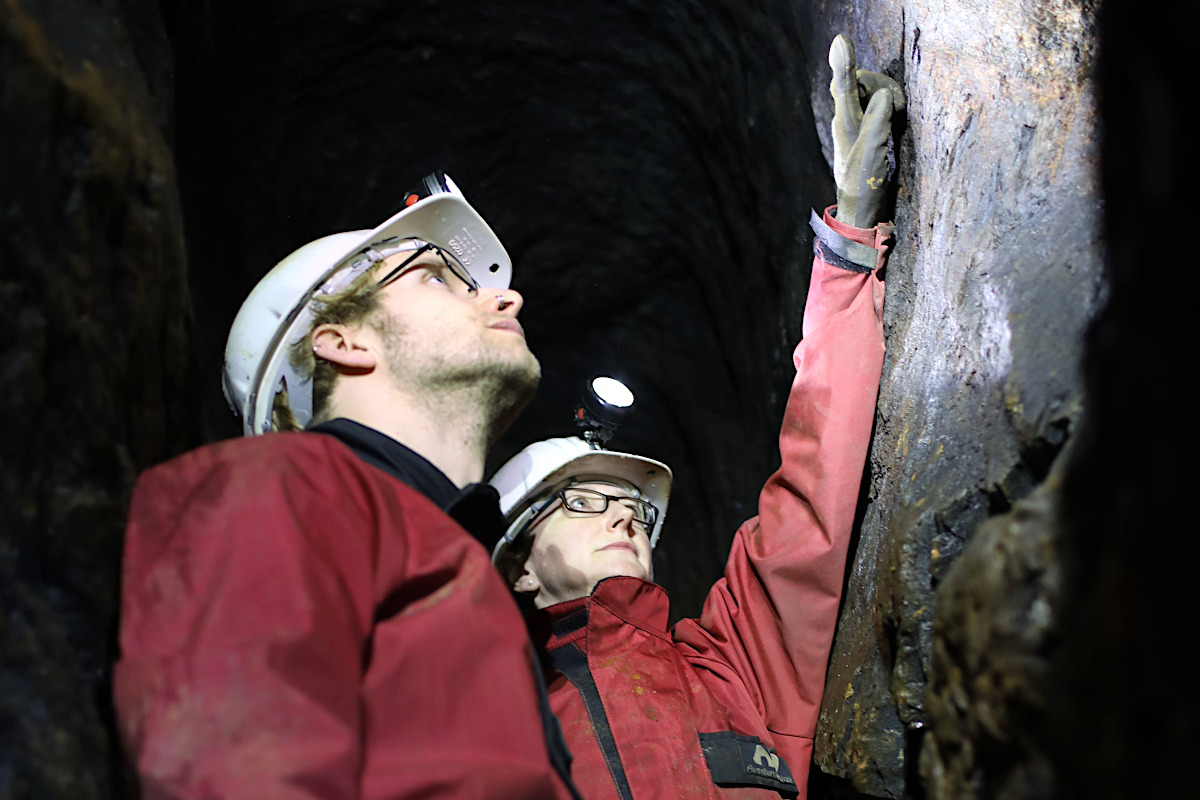The archaeology section carries out a montanarchaeological survey in the selected areas of the mine workings. For this purpose, the extent of the findings to be recorded, their characteristics and individual structures are determined and the mine workings are subdivided into individual findings or findings complexes. This categorisation is initially carried out according to basic criteria relating to the individual mine workings, such as dimension, type of drift, original function or other related features. On this basis, the recorded features and individual structures are then recorded in a standardised way and supplemented by detailed photos.
The time factor causes difficulties, especially in the case of very old mine workings: due to changes in use, the extension of safety measures or the natural ageing process, these have been subject to changes over the centuries, which cannot always be clearly traced. An old mine room may have been extended in recent times in such a way that the original dimensions have been completely changed. In this way, all the old features, such as toolmarks, seats for stages or the remains of drill holes, are overprinted. In the same way, new features can be added in preserved old cavities to this day, which can be wrongly regarded as old. The careful recording of the findings helps to classify the characteristic traces that the miners have left over the centuries.
An important point of view is created by the further, subsequent evaluation of the findings in the 3D model. In this way structures can not only be viewed from other perspectives but also put into a larger spatial context. Only this makes it possible in many cases to address the findings precisely.
The findings obtained in this way are finally compared with historical sources, such as cracks, files and documents, and in this way the direct integration into the overall historical picture is achieved.
